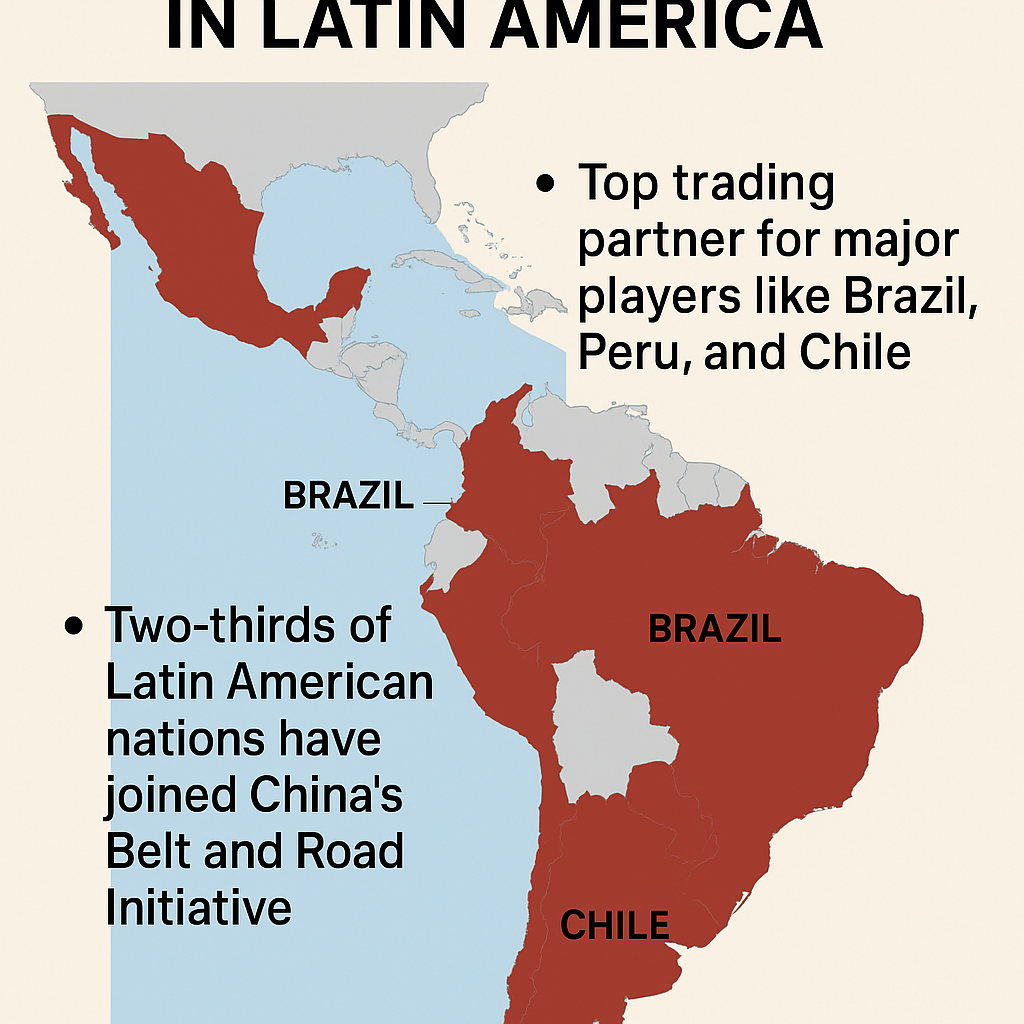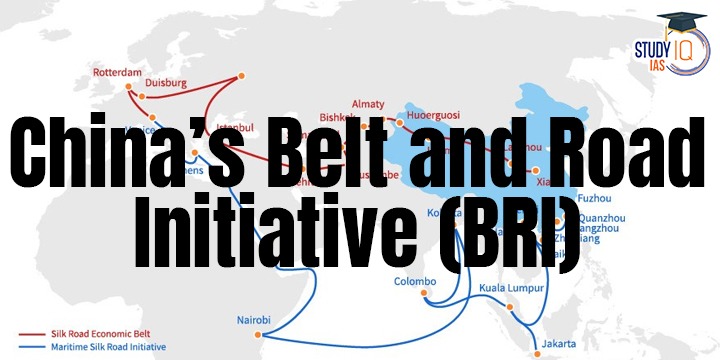Table of Contents
Context: Colombia formally agreed to join China’s vast Belt and Road infrastructure initiative.
China Belt and Road Initiative (BRI)
- The China Belt and Road Initiative (BRI), formerly known as the One Belt One Road (OBOR) initiative, is a global infrastructure development strategy adopted by China in 2013 to invest in nearly 150 countries and international organisations.
- Also known as “One Belt One Road” (OBOR) or the “New Silk Road“.
- Aim of China’s Belt and Road Initiative (BRI): To enhance global trade, infrastructure connectivity, and economic integration across Asia, Europe, Africa, and beyond.
- Number of Participatory Nations: About 140

Routes of China Belt and Road Initiative (BRI)
The Belt and Road Initiative (BRI) is divided into two main components:
New Silk Road Economic Belt
It aims to connect China to Central Asia, West Asia, and Europe through a network of roads, railways, and pipelines. The land-based Silk Road Economic Belt envisions six key corridors for development:
- China-Pakistan Economic Corridor (CPEC).
- New Eurasian Land Bridge Economic Corridor.
- China-Indochina Peninsula Economic Corridor.
- China-Mongolia-Russia Economic Corridor.
- China-Central Asia-West Asia Economic Corridor.
- China-Myanmar Economic Corridor.
| China-Pakistan Economic Corridor (CPEC) |
| It is a 3,000-km-long route of infrastructure projects connecting China’s northwest Xinjiang Uygur Autonomous Region and the Gwadar Port in the western province of Baluchistan in Pakistan. |
21st Century Maritime Silk Road
- It aims to connect China to Southeast Asia, Africa, and the Middle East through a network of ports and shipping routes. It begins via the South China Sea, going towards Indo-China, South-East Asia and then around the Indian Ocean, thus reaching Africa and Europe.
| Facts |
|
Significance of China Belt and Road Initiative (BRI)
- China’s Belt and Road Initiative (BRI) was meant to announce China’s arrival on the world stage as a true global economic power.
- It will develop new markets for China’s massive manufacturing sector.
- It will put forward China as a maritime power in the South China Sea and the Indian Ocean.
- Promotion of Chinese-led financial institutions like the Asian Infrastructure Investment Bank.
- Development of poorer western provinces of China, especially Xinjiang.
- Access to European markets for Chinese goods.
- Creation of an energy route from the Middle East and Africa to reduce dependence on choke points like the Strait of Hormuz.
Belt and Road Initiative: Progress
- More than 60 countries have now joined BRI agreements with China. Infrastructure projects under the initiative are planned or are under construction in Asia, Africa, Europe, and Latin America.
- However, in recent years, the BRI seems to have experienced a slowdown as annual Chinese lending to countries slimmed from its peak of $125 billion in 2015 to around $50 to 55 billion in 2021.
- Investments in giant infrastructure initiatives based in Africa have also declined substantially.
Belt and Road Initiative Challenges

- Poor implementation: While Chinese speed in approving loans and starting projects was often attractive, in practice, this meant poor coordination and oversight from Chinese authorities and an even poorer selection of projects.
- This has resulted in the loss of revenue for China and large debt levels for developing countries.
- Neglecting interests of local populations: An estimated 89% of contractors in China’s BRI projects happen to be Chinese companies. This means local firms seem to benefit little from these investments.
- E.g. BRI’s investments in the Gwadar port in Pakistan have enraged local fishing communities who have seen their business drop substantially with no perceivable benefits.
- Lack of transparency: The accusations of debt-trap diplomacy, the lack of transparency and unreasonable loan conditions have made the scheme extremely unpopular.
- E.g. In 2018, Pakistan pulled out from a deal to build the Diamer-Bhasha dam with China. The reason cited was strict deal conditions.
- Environmental Concerns:
- A 2017 report by the WWF noted that as many as 1,739 Important Bird Areas and Key Biodiversity Areas are at risk due to considerable overlap between BRI projects and sensitive environments.
- According to a recent study, BRI could potentially introduce more than 800 alien invasive species into several countries along its many routes and developments, threatening their ecosystems.
- Separatist movement and ethnic tensions: particularly in Xinjiang province, prove to be a primary challenge for the development of BRI.
- Also, the regional disparity between the eastern and western regions of China complicates the use of the western region to connect to neighbouring countries.
BRI Impact on India
- Violation of India’s Sovereignty: The CPEC violates Indian territorial integrity as it passes through Pakistan-occupied Kashmir.
- Militarization of India’s Neighbourhood: India’s strategic and national interests are closely linked to peace and stability in the IOR (Indian Ocean Region). However, IOR is witnessing unprecedented militarization due to Chinese support in the form of military technology, fighter aircraft, warships and submarines.
- BCIM-EC and North East India: India is also sensitive to the possible security concerns arising out of linking its restive North East to the Yunnan province of China through the BCIM-EC.
- The Bangladesh, China, India and Myanmar Economic Corridor (BCIM) was proposed as part of BRI in 2015.
- Security Challenge to India and Indian Shipping: The BRI and CPEC will likely lead to increased shipping congestion in the lOR, thereby posing a security challenge to India, Indian shipping and complicating its Maritime Domain Awareness.


 America’s Plan to Manage AI Proliferat...
America’s Plan to Manage AI Proliferat...
 Turning Point in Eurasia and its Implica...
Turning Point in Eurasia and its Implica...
 South Asian Economic Integration: Potent...
South Asian Economic Integration: Potent...





















